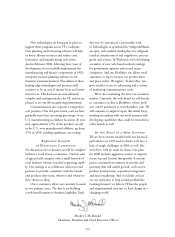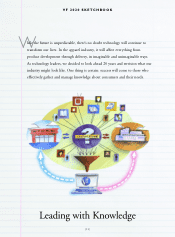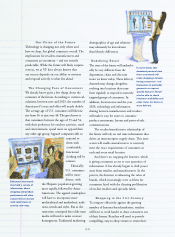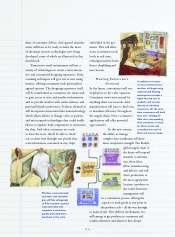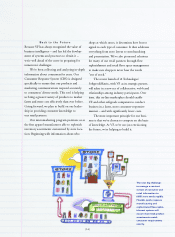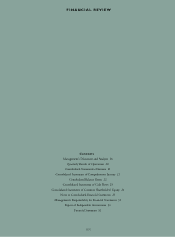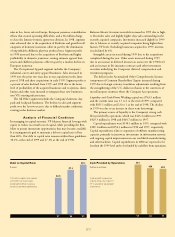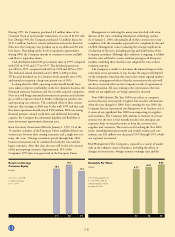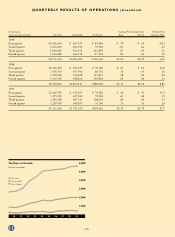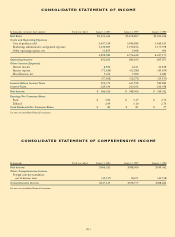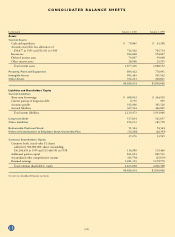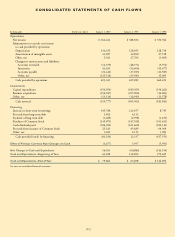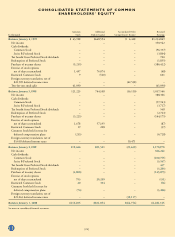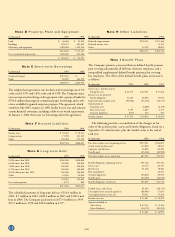North Face 1999 Annual Report Download - page 20
Download and view the complete annual report
Please find page 20 of the 1999 North Face annual report below. You can navigate through the pages in the report by either clicking on the pages listed below, or by using the keyword search tool below to find specific information within the annual report.
[18]
During 1999, the Company purchased 4.0 million shares of its
Common Stock in open market transactions at a cost of $149.1 mil-
lion. During 1998, the Company purchased 3.2 million shares for
$147.4 million. Under its current authorization from the Board of
Directors, the Company may purchase up to an additional 8.0 mil-
lion shares. Depending on the level of acquisition opportunities
during 2000, the Company intends to continue to invest available
cash flow to repurchase shares.
Cash dividends totaled $.85 per common share in 1999, compared
with $.81 in 1998 and $.77 in 1997. The dividend payout rate
was 28% in 1999, compared with 26% in 1998 and 28% in 1997.
The indicated annual dividend rate for 2000 is $.88 per share.
VF has paid dividends on its Common Stock annually since 1941
and intends to maintain a long-term payout rate of 30%.
Looking ahead to 2000, operating results should benefit from
steps taken to improve profitability in the Lee domestic business, the
European jeanswear businesses and the recently acquired companies.
Next year will bring continued investments in systems and technolo-
gy, as well as expenses related to further reducing our product cost
and operating cost structure. The combined effect of these actions
indicates that earnings in 2000 may be flat with 1999 and that cash
flow from operations should exceed $500 million. With our strong
financial position, unused credit lines and additional borrowing
capacity, the Company has substantial liquidity and flexibility to
meet investment opportunities that may arise.
Euro Currency Conversion Effective January 1, 1999, 11 of the
15 member countries of the European Union established fixed con-
version rates between their existing currencies and a single new cur-
rency, the “euro.” During a transition period through June 2002,
business transactions can be conducted in both the euro and the
legacy currencies. After that date, the euro will be the sole currency
of the participating countries. Approximately 11% of the
Company’s 1999 sales were generated in the European Union.
Management is evaluating the many areas involved with intro-
duction of the euro, including information technology systems.
As of January 1, 2000, substantially all of these systems were euro
compliant, with the remainder expected to be compliant by the end
of 2000. Management is also evaluating the strategic implications
of adoption of the euro, including pricing and distribution of the
Company’s products. Although this evaluation is ongoing, it is likely
that the euro will lead to a more uniform pricing in all European
markets, including those that have not adopted the euro as their
common currency.
The Company is unable to determine the financial impact of the
conversion on its operations, if any, because the impact will depend
on the competitive situations that exist in the various regional markets.
However, management believes that the conversion to the euro will
not have a material effect on the Company’s results of operations or
financial position. All costs relating to the conversion to the euro,
which are not significant, are being expensed as incurred.
Year 2000 Update The Year 2000 issue relates to computer
systems that may not properly recognize date-sensitive information
when the year changed to 2000. Since entering the year 2000, the
Company has not experienced any disruptions to its business, nor is
it aware of any significant Year 2000 issues impacting its suppliers
and customers. The Company will continue to monitor its critical
systems over the next several months but does not anticipate any
exposures from its internal systems or from the activities of its
suppliers and customers. The total cost of resolving the Year 2000
issues, including internal personnel and outside vendors and con-
sultants, was $26 million over the period 1997 through 1999, which
was expensed as incurred.
Risk Management The Company is exposed to a variety of market
risks in the ordinary course of business, including the effects of
changes in interest rates, foreign currency exchange rates and the
Return on Average
Common Equity
Percent
At 17.3%, our ROE
is within our target
of 17 – 20%.
18.2
19.7
17.3
97 98 99
Dividends Per Share
Dollars
VF’s dividend payout rose
5% for 1999, with an
indicated payout of $.88
per share for 2000.
0.77
0.81
0.85
97 98 99




